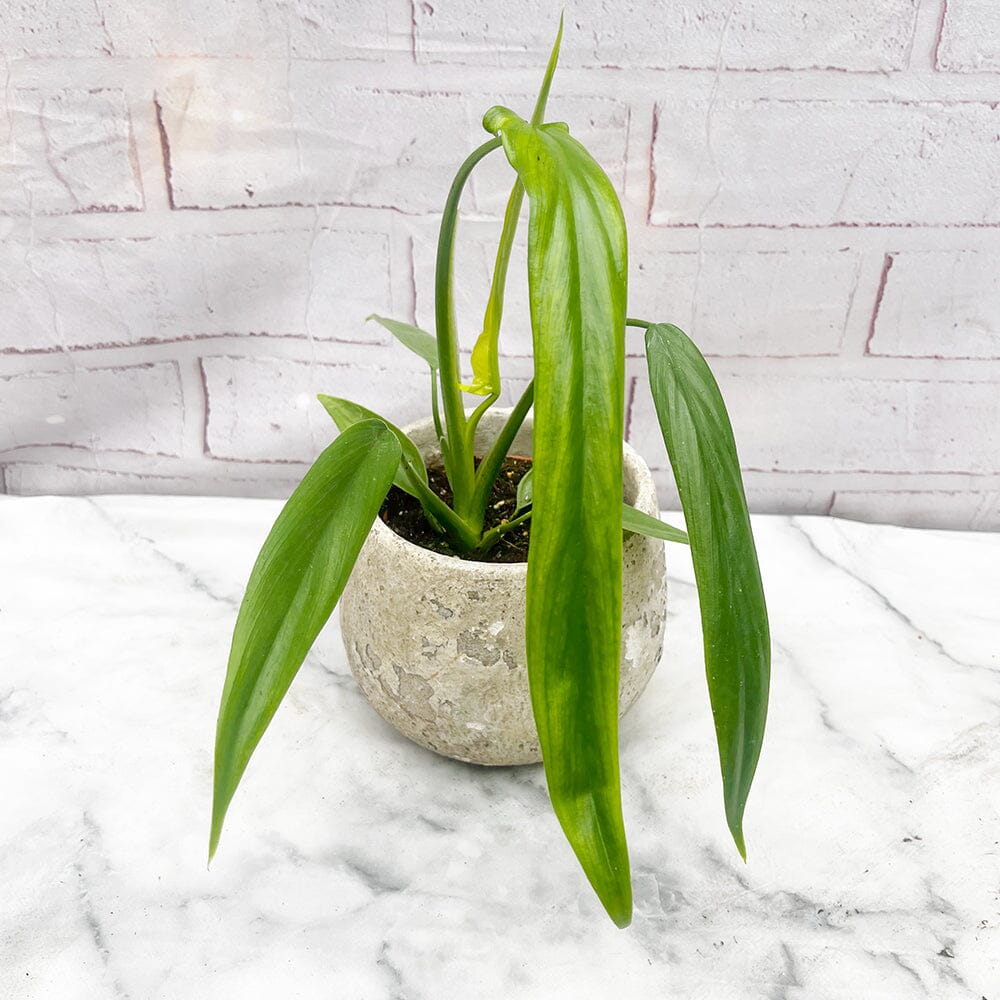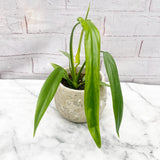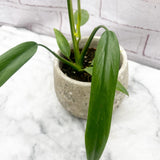Sold Out
15 - 20cm Philodendron Holtonianum House Plant in 10cm Pot
Philodendron Holtonianum is a tropical plant native to Ecuador. It's known for its long, narrow leaves that boast an attractive velvety texture and deep green color, making it an appealing choice for houseplant enthusiasts.
Here is a guide to taking care of your Philodendron Holtonianum:
-
Light: Philodendron Holtonianum thrives in bright, indirect light. Too much direct sunlight can lead to sunburn on the leaves, whereas insufficient light may lead to leggy growth.
-
Water: Water your Philodendron Holtonianum when the top 1-2 inches of the soil is dry. It prefers consistently moist soil, but overwatering can lead to root rot.
-
Humidity: Being a tropical plant, this Philodendron enjoys high humidity. Try to maintain a humidity level of at least 50%. You can achieve this by using a humidifier, placing the plant on a water-filled pebble tray, or grouping it with other plants.
-
Temperature: Ideal temperatures for Philodendron Holtonianum range between 65-85°F (18-29°C). Avoid places with drafts or sudden temperature changes.
-
Soil: A well-draining, aerated potting mix is essential. A combination of peat, perlite, and orchid bark often works well. This mixture ensures good drainage while retaining sufficient moisture.
-
Fertilizer: During the growing season (spring and summer), feed your Philodendron Holtonianum with a balanced houseplant fertilizer once every month. Always follow the instructions on the fertilizer's packaging to avoid over-fertilizing.
-
Propagation: This plant can be propagated through stem cuttings. Simply cut a stem below a node (where a leaf or branch is or was attached) and place it in water until roots develop, then plant it in soil.
-
Pruning: Regular pruning helps maintain the plant's shape and size, as well as encouraging fuller growth. Prune off any yellow or dying leaves to keep the plant healthy.
-
Pest Control: Be vigilant for common pests such as aphids, spider mites, and mealybugs. If you notice any, treat the plant with an insecticidal soap or neem oil.
-
Support: Like other Philodendrons, Holtonianum is a climbing plant and will appreciate a support like a moss pole or trellis to help it grow upwards.
-
Repotting: Repot your Philodendron Holtonianum every 2 years, or when you notice the roots are becoming too crowded in the pot.
Please note that every plant is unique and may require some adjustments to these general care guidelines. Always pay attention to your plant's signals and adjust care as necessary. Enjoy the process of nurturing your Philodendron Holtonianum!
Check out our YouTube video to see exactly how we pack for safe delivery.
- Plants are supplied in plastic nursery pots unless stated in the product title.
- Plants are not for consumption unless stated as edible.
- Plant heights can fluctuate +/- 10%.
- Our plants are kept at our tropical nursery in Yorkshire where we maintain an average temperature of 18c.
































